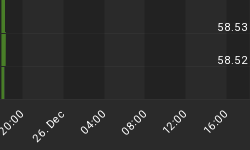With paper oil prices having peaked, we keep hearing a question that demonstrates the uninformed minds of many strategists and talking heads in the business media. That question is, "Have commodity prices peaked?" Again, commodities is not a homogeneous asset class. Comprising it are actually three separate and distinct commodity groups. Energy, minerals, and Agri-Food are the three major genus of the family referred to as commodities. Each is driven by different and unique factors. Each will have a individualistic investment cycle that will drive prices and returns. Falling oil prices may tangentially influence some Agri-Food prices, but do not dominate them. However, the greater impact of lower oil price may be the reduction in costs and improved profitability.

This week's chart shows the slope and the strength of the trend for the components of our Base Agri-Food Price Index. A positive value for the slope of the price trend for an Agri-Food commodity means the price trend is rising. At this time of the year, with Northern hemisphere crops in the ground, weather tends to influence prices. It does that every year. Weather in any single planting cycle is a transitory influence on price, and does change longer term trends. Individual Agri-Food commodities are ranked in the chart by the strength of the price trend. Rice, soybeans, and corn dominate all, as they do in the headlines of the popular press. More important may be that meat group has, with exception of feeder steers, developed positive trends. That development may mean that breeding and feeding side of business may have finally adjusted to higher cost of feed grains. While analysts talk about demand destruction due to high oil prices, we have less concern for that possibility in Agri-Foods. Consumers in BRIC, particularly China and India, are becoming wealthier. Their demand for Agri-Foods will only increase over next ten years. Why worry about loan losses when one can invest in Agri-Food sector?
AGRI-FOOD THOUGHTS are from Ned W. Schmidt,CFA,CEBS, publisher of Agri-Food Value View, a monthly exploration of the Agri-Food grand cycle being created by China, India, and Eco-energy. To review a recent issue, write to agrifoodvalueview@earthlink.net.
















